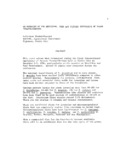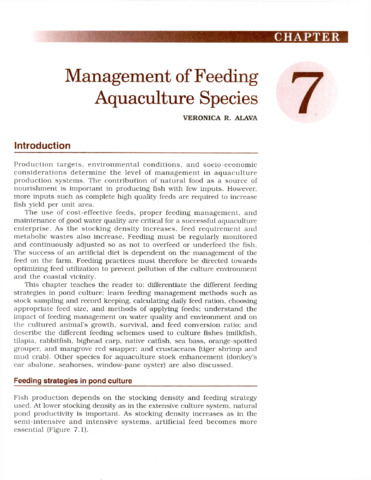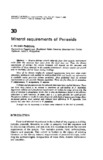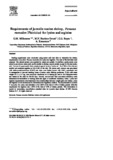An overview of the nutrition, feed and feeding techniques of prawn penaeid/shrimps
Share
นามธรรม
This paper echoes what transpired during the first International Conference of Penaeid Prawns/Shrimps held in Iloilo City in December 4-7, 1984, particularly on the Nutrition nd Feed Development. Around 25 papers were presented during the conference.
The nutrient requirements of P. japonicus and to some extent, P. monodon have been studied quite extensively compared to other penaeid species. Requirements for protein, carbohydrates fats, amino acids and essential fatty acids for juveniles and larvae have been defined compared to those of the broodstock.
Optimum protein levels for prawn juveniles vary from 28-38% for P. kerathurus, 40-46% for P. monodon, 43% for P. indicus and 50-54% for P. japonicus. Dissacharides like sucrose and trehalose have been found to be good source of carbohydrates at 20-25% in the diet. Crustacean diets require around 0.5% cholesterol. There are few studies on vitamine and mineral requirements.
There are artificial diets for juveniles and microencapsulated diets that can completely replace live organisms as larval feed. Microencapsulated diets have been field-tested for P. vannamei, P. stylirostris, P. monodon, P. indicus and P. merguiensis in Ecuador, Taiwan, Malaysia, Thailand and the Philippines.
When a commercial diet for the broodstock becomes available ther will be an artificial diet for athe life cycle of tha prawn.
การอ้างอิง
Piedad-Pascual, F. (1989). An overview of the nutrition, feed and feeding techniques of prawn penaeid/shrimps. In R. D. Fortes, L. C. Darvin, & D. L. de Guzman (Eds.), Fish and Crustacean Feeds and Nutrition. Proceedings of the Seminar-Workshop on Fish and Crustacean Feeds and Nutrition, 25-26 February 1985, Iloilo City, Philippines (pp. 4-9). Laguna, Philippines: Philippine Council for Aquatic and Marine Research and Development.
เรื่อง
Taxonomic term
คอลเลกชัน
รายการที่เกี่ยวข้อง
แสดงรายการที่เกี่ยวข้องตามชื่อผู้แต่งผู้สร้างและเรื่อง
-
Management of feeding aquaculture species
Alava, Veronica R. (Aquaculture Department, Southeast Asian Fisheries Development Center, 2002)This chapter teaches the reader to: differentiate the different feeding strategies in pond culture; learn feeding management methods such as stock sampling and record keeping, calculating daily feed ration, choosing ... -
Mineral requirements of Penaeids
Piedad-Pascual, F. (Institut Francais de Recherche pour l'Exploitation de la Mer, 1990)Marine shrimps absorb minerals from their aquatic environment aside from the minerals that come from the food they eat. Thus, the dietary requirement of shrimps for certain minerals will depend on the amounts and availability ... -
Requirements of juvenile marine shrimp, Penaeus monodon (Fabricius) for lysine and arginine
Millamena, Oseni M.; Bautista-Teruel, M. N.; Reyes, O. S.; Kanazawa, A. (Elsevier, 1998)Feeding experiments were conducted using amino acid test diets to determine the dietary requirements of juvenile Penaeus monodon for lysine and arginine. Two sets of the test diets were prepared. The natural protein was ...





